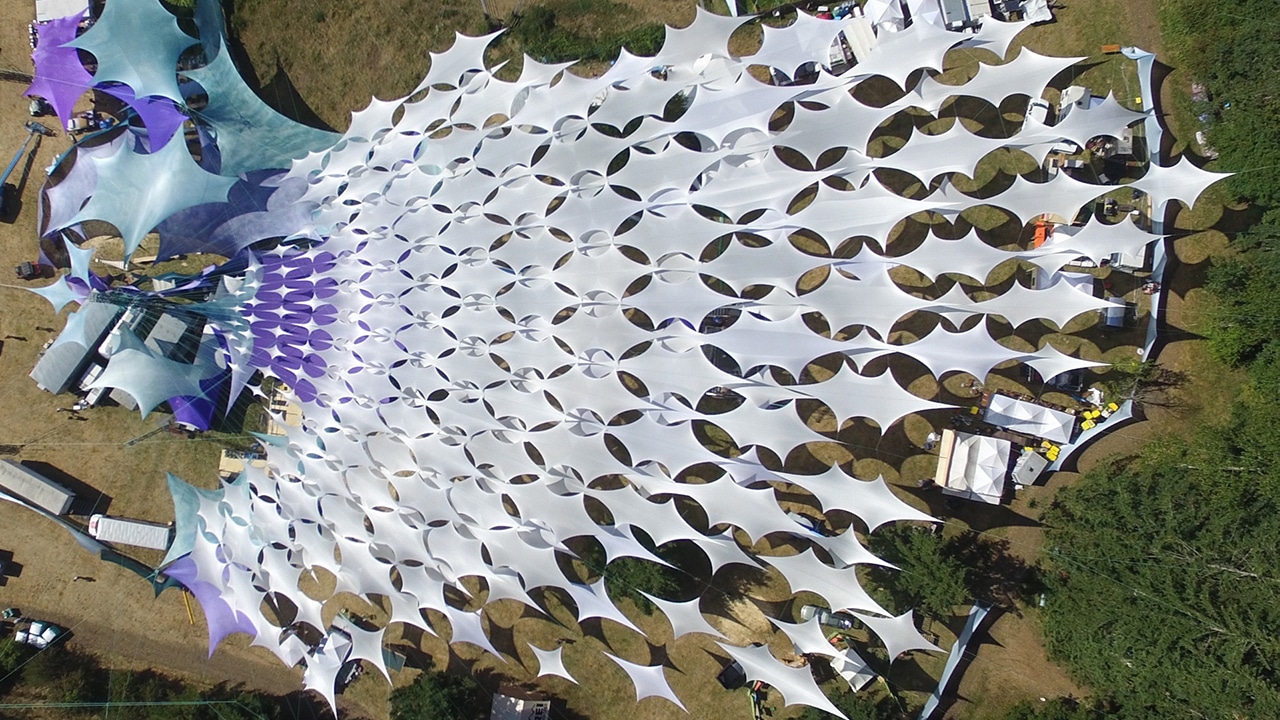
GuildWorks’ large-span fabric concepts employ tension to create vast, covered outdoor spaces, keeping gatherers cool in the summer. This installation has a free span of over 500 feet by 350 feet. [Photo: Courtesy of GuildWorks]
With GuildWorks’ Fabric Architecture, the Creative Options Are Sky High
Turns out, fabric is good for a lot more in architecture than tents and umbrellas. It can replace other building materials as a permanent solution in many applications. “It is often misunderstood that fabrics might be something that are easily blown away or damaged when really they can be a long-term solution,” says Mar Ricketts, CEO and senior design principal at fabric architecture company GuildWorks.
GuildWorks has been producing, designing, and installing fabric structures for more than 20 years. During that time they have pushed the boundaries of what was once thought to be possible with tension fabric structures. “We are now building on a larger scale than ever before,” he says. The company has built inspiring structures for everyone from the likes of Oracle and Nike to hospitals and civic parks.
The benefits of fabric run the gamut—exceeding sustainability standards, managing stormwater, reducing urban heat island effect, and offering quick install times, design flexibility, durability, and low maintenance. “It’s really a combination of beauty and form with minimal materials,” Ricketts says.
The design flexibility of tension fabric structures allows for endless creative potential with few limitations. “It’s more than a structure. We are creating environments for people. We are creating a whole feel,” says Sebastian Collet, vice president and senior design principal. “It’s not just mere protection from elements but also a greater meaning behind what makes architecture special.”
Scroll down to read about seven of the ways fabric can transform a space.
FROM OUR JAN+FEB 2019 ISSUE
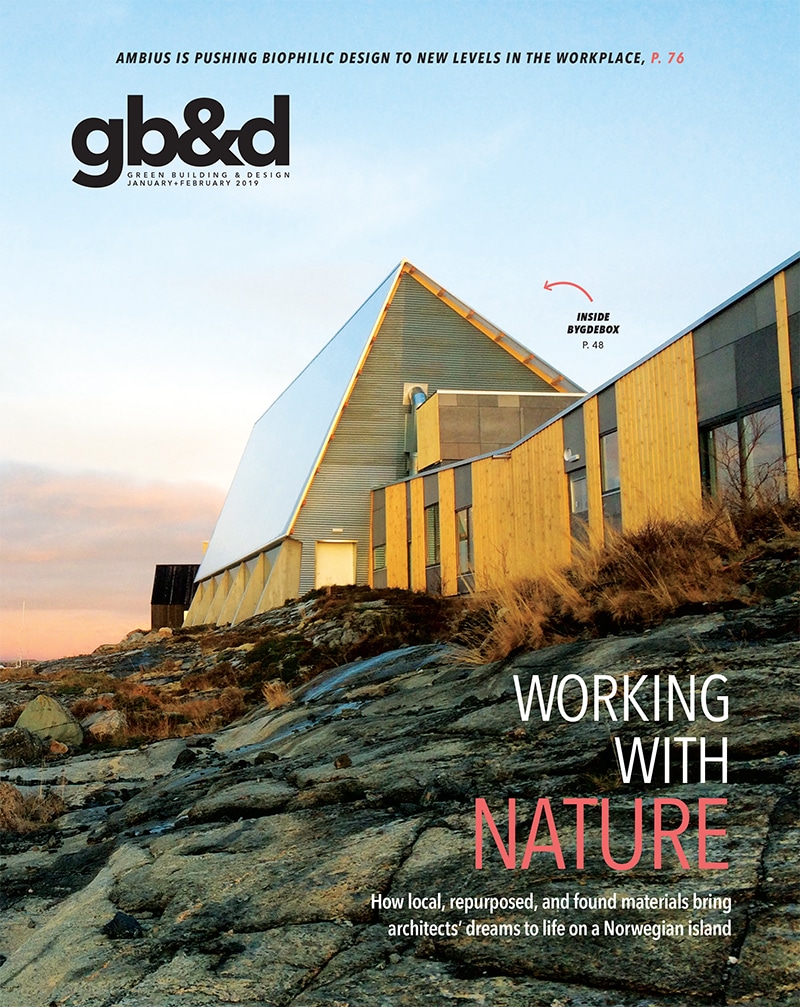
1. Courtyard Covers/Facades
Courtyards have been traditionally open to the elements. Using fabric to create spaces where people can easily get cover from sun, rain, and wind while still being in an outdoor environment allows for more use of outdoor space. “Outdoor living is becoming very important,” Ricketts says. “Creating protected areas in that outdoor space will allow it to become more inhabitable.”
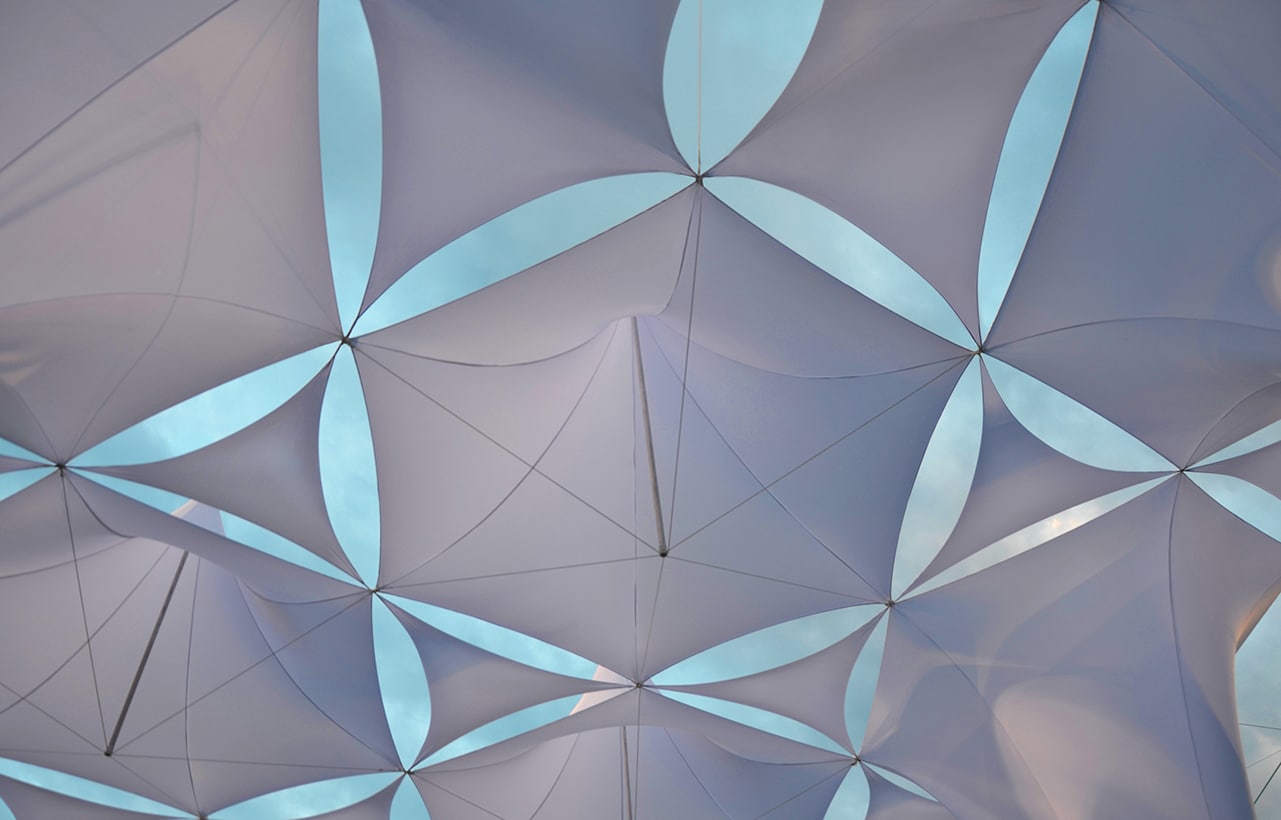
The courtyard canopy employs fabric-shaping and suspended poles to offer protection against wind and weather while also providing visually exciting roofing. [Photo: Courtesy of GuildWorks]
2. Open-Air Structures
You’ll find many of GuildWorks’ permanent fabric structures in civic open-air spaces like parks and playgrounds. The structures add shade and weather protection without full coverage. “They are a great alternative to a gazebo, very lightweight, and add to the environment without adding mass. It’s a nice, beautiful, functional space,” Collet says.
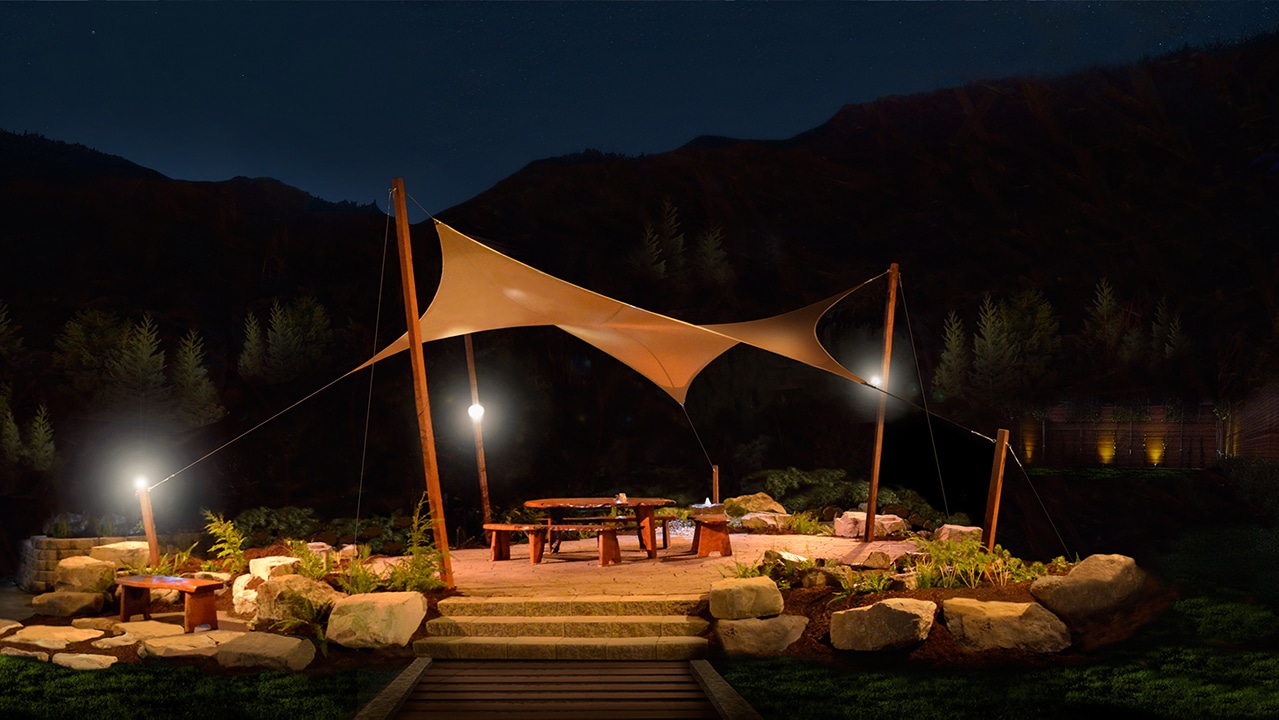
At a private estate, a small fabric pavilion provides a great place to enjoy a meal or gathering. Soft lighting on the fabric provides a gentle glow to the entire space. [Photo: Courtesy of GuildWorks]
3. Pavilions & Amphitheaters
As places of entertainment, pavilions and amphitheaters are a great space to incorporate fabric architecture. The design flexibility of fabric allows for strategic light reflection while providing a visually stimulating atmosphere. Less structural support is needed for the lightweight fabric than other materials, helping to keep the area open. “It really has a beautiful presence for the audience,” Collet says.
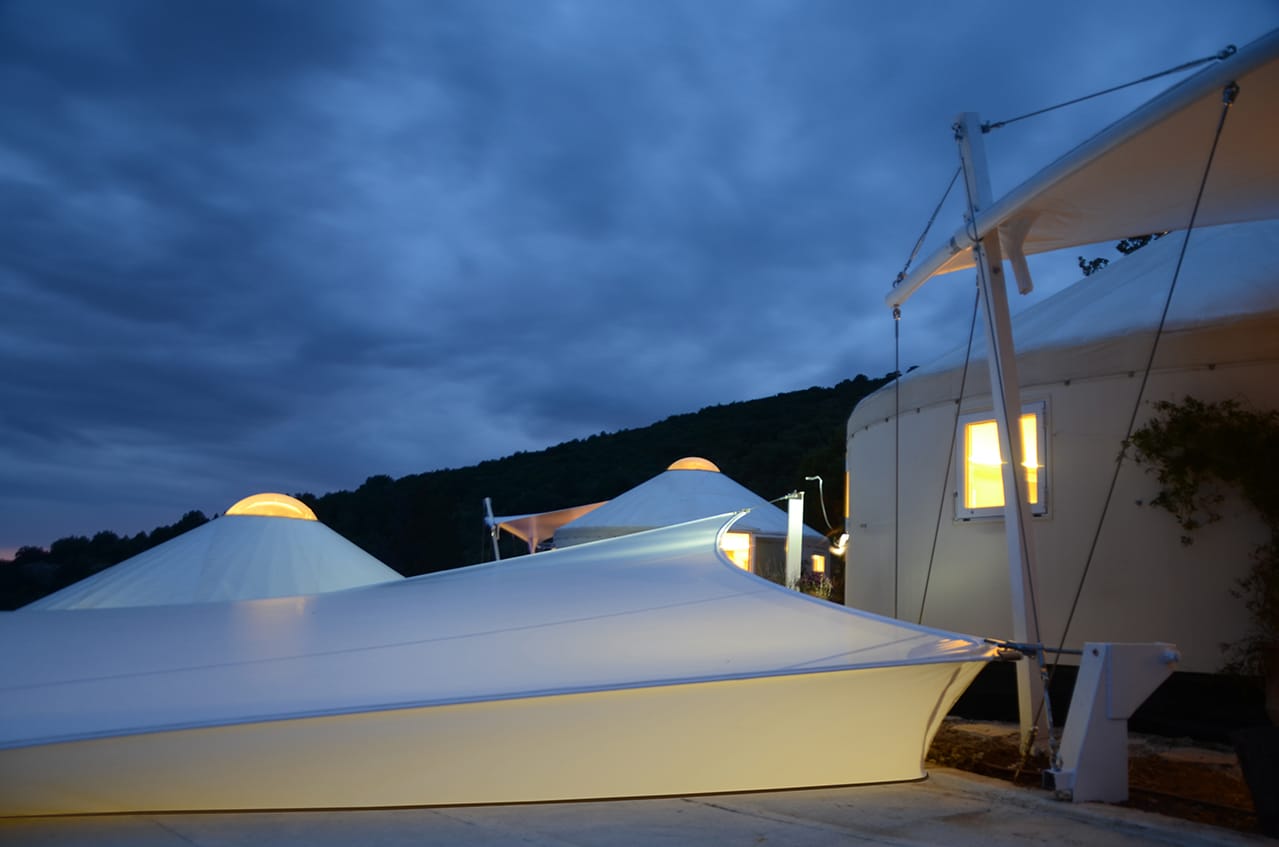
This eco-resort on the island of Corfu, Greece, boasts fabric structures that house and provide weather protection for guests. Fabric also collects rainwater into large filtered tanks to provide water for the site. [Photo: Courtesy of GuildWorks]
4. Alternative to Glass
While technically not fabric, GuildWorks also uses a technology called ETFE, or ethylene tetrafluoroethylene, which is a translucent polymer sheeting. The lightweight sheets provide a less expensive alternative to glass walls or skylights. ETFE meets the same R-values as glass at 10 to 13% of the weight and spans further increasing open space by requiring less structural elements to hold it in place.
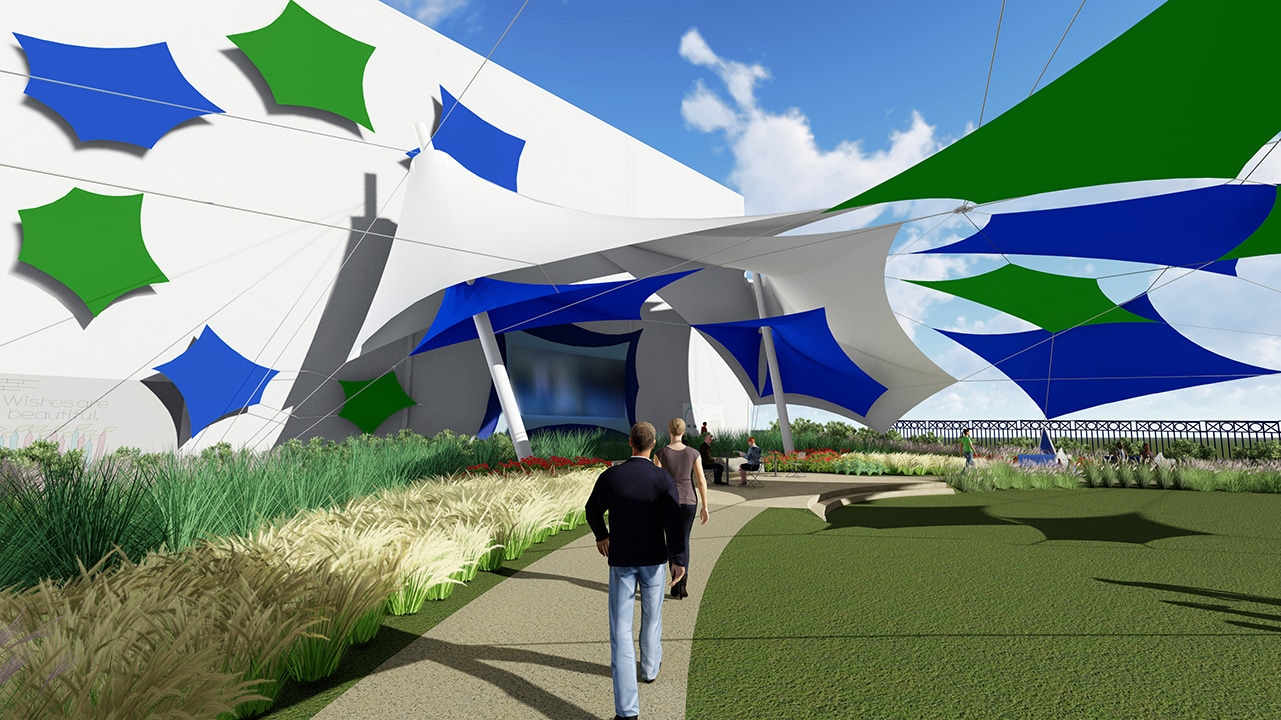
About to break ground, this hospital park will provide a place for patients and families to relax outside. A large covered area can serve as a stage for special events while shade panels offer protection for activities in nearby areas. [Rendering: Courtesy of GuildWorks]
5. Sound Dampening
Using fabric architecture inside can add design value while softening an environment. It can be used to break up space while also dampening sound. The solar reflectiveness of fabric panels can also help to bounce light around a space, adding to the atmosphere. “There are lots of fun things that can happen with interior spaces and fabrics,” Ricketts says.

Gatherers can feel a sense of openness at this outdoor conference area while also enjoying shade and luxuriating in dynamic architecture. [Photo: Courtesy of GuildWorks]
6. Building Enclosures
Adding fabric to walkways between buildings transforms spaces into beautiful works of art that double as meeting places or retail venues. The fabric provides protection from the elements, too, allowing for increased use of the space. “Maybe you find that rain is hurting business at a mall or other retail venue,” Ricketts says. “A fabric enclosure can protect the environment from rain or other weather while still making it feel like a natural outdoor space.”
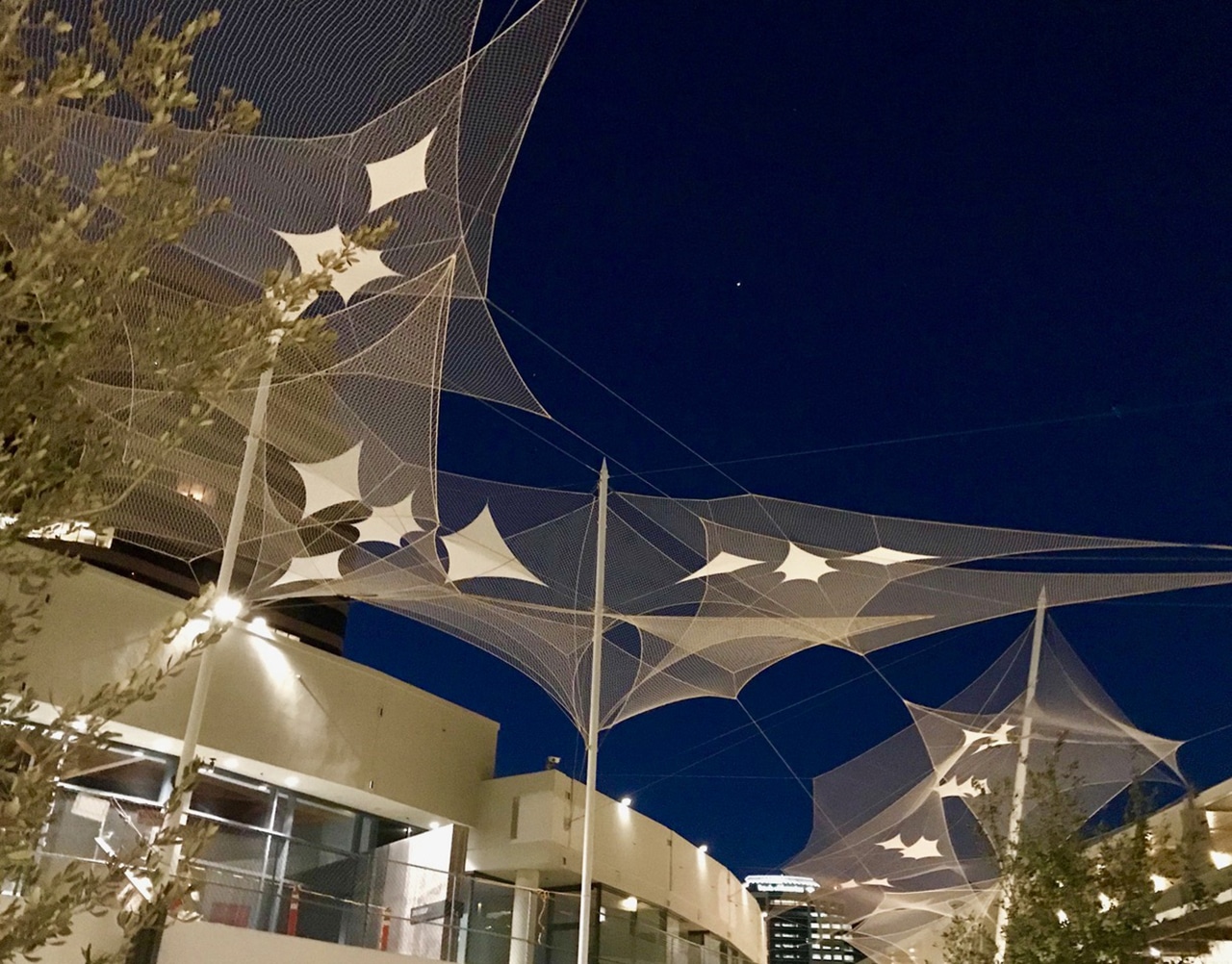
The sculpture Dancing Sky, part of a new renovation of the Arizona Center in downtown Phoenix, utilizes netting and fabric, adding large-scale visual interest—with low loads—to an existing building. [Photo: Courtesy of GuildWorks]
7. More Unique Uses
Utilizing fabric for the roof of a parking structure, stadium, or transport hub can help to reduce the heat island effect of those structures while creating a beautiful urban centerpiece. “Fabric will keep it cool while adding artistic style. It makes it a more beautiful element instead of a concrete box,” Ricketts says. The tension fabric can also be positioned to direct stormwater runoff to a cistern or other vessel, where it can be stored and reused.
